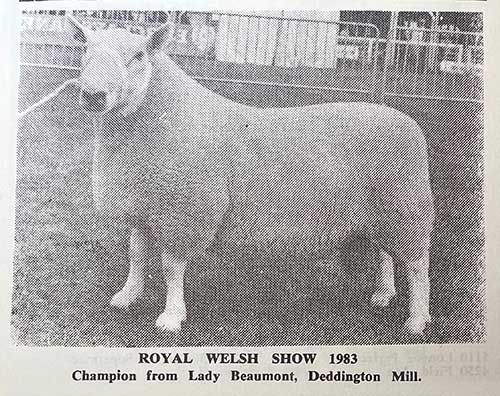North Country Cheviots set for 40th year at Royal Welsh
 © Red Stag Media
© Red Stag Media Hardy Scottish sheep breed, the North Country Cheviot, will celebrate its 40th appearance at the Royal Welsh Show this year.
A handful of dedicated breeders who had successfully begun to establish the Northie first exhibited the versatile breed at the event in 1983.
Among them was recent past president of the North Country Cheviot Sheep Society, Melfyn Williams, whose father, John Huw, was a noted early adopter of the breed.

Melfyn Williams winning the North Country Cheviot champion at the Royal Welsh Show in 2013 © Red Stag Media
See also: Royal Welsh Show makeover focuses on great visitor experience
The Williamses were joined by other well-known breeders of the day, including David Pittendreigh, David Roberts, John Lloyd and David Hughes, to compete in just two classes, one for rams and the other for ewes.
Mr Williams recalls that in 1983, there were about 34 North Country Cheviots exhibited, with the first title being won by Lady Beaumont of Deddington Mill, Oxfordshire.

First Royal Welsh Northie champion owned by Lady Beaumont © Red Stag Media
This year there have been more than 130 entries for the Northie classes at the Royal Welsh, with breeders coming from all corners of the country.
“Those early shows were a fantastic time for someone with an interest in the breed, as they set the scene for the next 40 years,” said Mr Williams, who was aged about 14 at the time.
“Naturally, everyone wanted to win in the ring, but as soon as it was over, everyone got together, had a drink or two and talked about Northies. It was a great atmosphere then and still is now.”
He has competed at every Royal Welsh Show since, except when his dad judged the interbreed classes, the year of foot-and-mouth, and when it was cancelled due to the Covid-19 pandemic.
The North Country Cheviot was first introduced into Wales in the 1970s after the breed society felt there was potential in crossing the breed to the Welsh Mountain ewe.
It is one of the largest hill breeds, and the park type is suited to lower pasture and hill areas, while the hill type can go “further up the mountain”.
